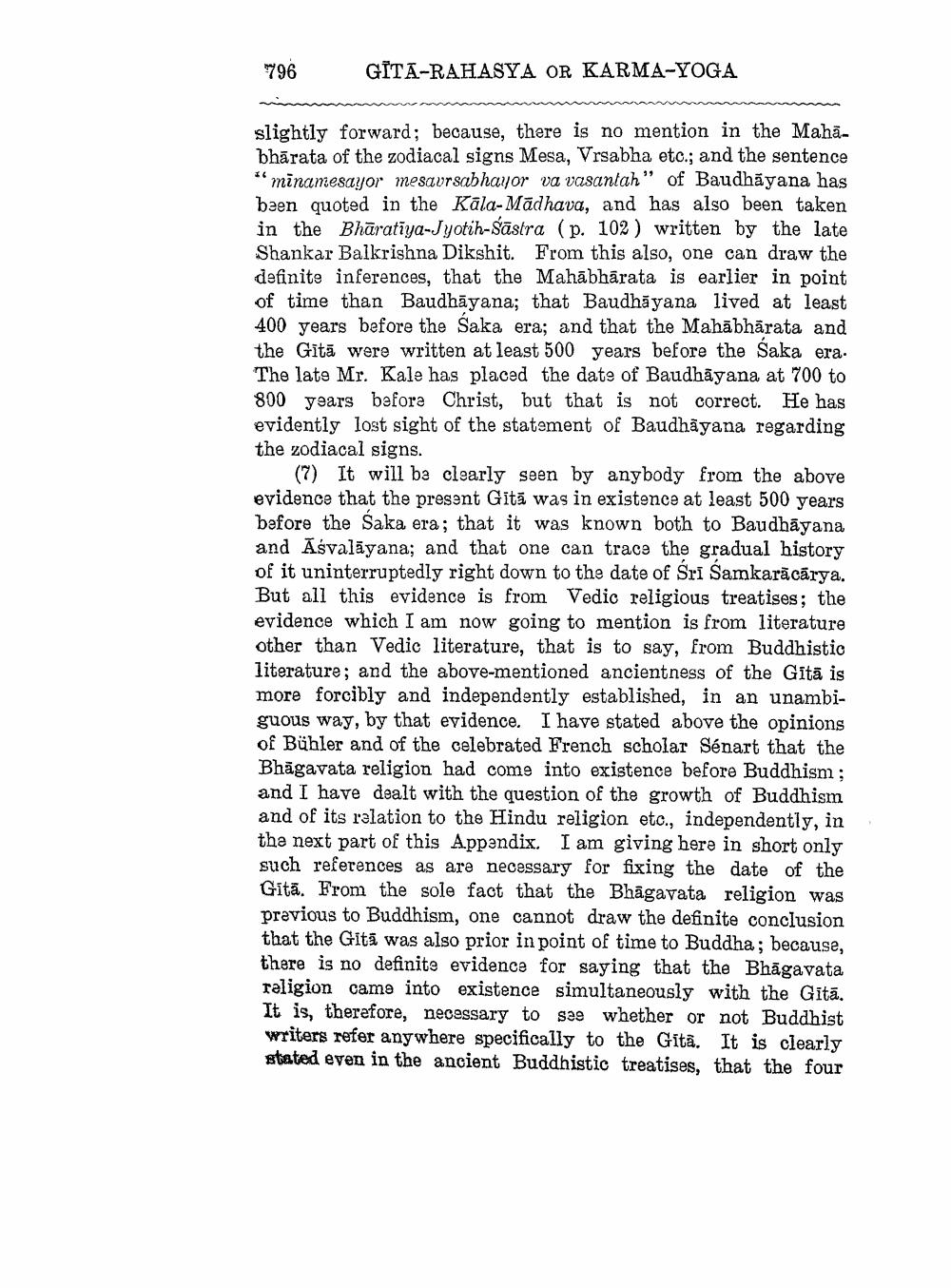________________
796
GITA-RAHASYA OR KARMA-YOGA
slightly forward; because, there is no mention in the Mahabhārata of the zodiacal signs Mesa, Vrsabha etc.; and the sentence * minamesayor mesavrsabhayor va vasantah" of Baudhāyana has been quoted in the Kala-Madhava, and has also been taken in the Bhāratīya-Jyotih-śāstra (p. 102) written by the late Shankar Balkrishna Dikshit. From this also one can draw the definite inferences, that the Mahābhārata is earlier in point of time than Baudhāyana; that Baudhāyana lived at least 400 years before the Saka era; and that the Mahābhārata and the Gītā were written at least 500 years before the Saka era. The late Mr. Kale has placed the date of Baudhāyana at 700 to 800 years before Christ, but that is not correct. He has evidently lost sight of the statement of Baudhāyana regarding the zodiacal signs.
(7) It will be clearly seen by anybody from the above evidence that the present Gitā was in existence at least 500 years before the Saka era; that it was known both to Baudhāyana and Asvalāyana; and that one can trace the gradual history of it uninterruptedly right down to the date of Sri Samkarācārya. But all this evidence is from Vedic religious treatises; the evidence which I am now going to mention is from literature other than Vedic literature, that is to say, from Buddhistic literature; and the above-mentioned ancientness of the Gītā is more forcibly and independently established, in an unambiguous way, by that evidence. I have stated above the opinions of Bühler and of the celebrated French scholar Sénart that the Bhāgavata religion had come into existence before Buddhism ; and I have dealt with the question of the growth of Buddhism and of its relation to the Hindu religion etc., independently, in the next part of this Appendix. I am giving here in short only such references as are necessary for fixing the date of the Gitā. From the sole fact that the Bhagavata religion was previous to Buddhism, one cannot draw the definite conclusion that the Gitā was also prior in point of time to Buddha; because, there is no definite evidence for saying that the Bhāgavata religion came into existence simultaneously with the Gītā. It is, therefore, necessary to see whether or not Buddhist writers refer anywhere specifically to the Gità. It is clearly stated even in the ancient Buddhistic treatises, that the four
i




